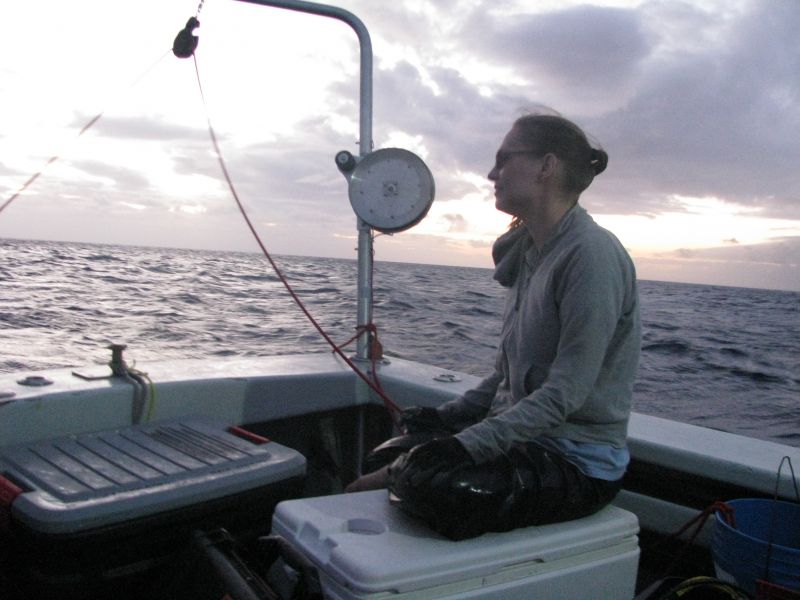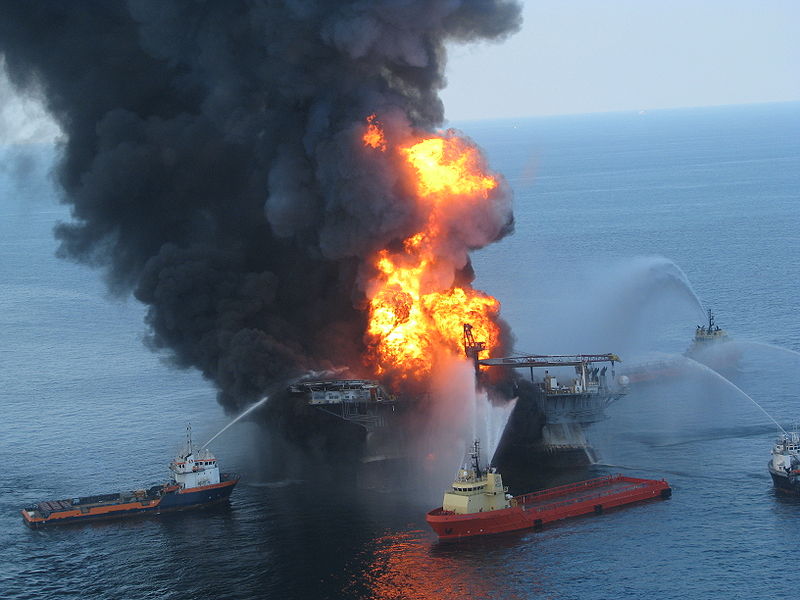
Cluster of anaerobic methane-consuming archaea (red) and sulfate reducing bacteria (green). This cluster of cells has fluorescent molecules attached that show up as different colors when viewed with a special microscope. Photo courtesy of <a href="http://www.gps.caltech.edu/people/vorphan/profile">Victoria Orphan</a>, California Institute of Technology.
Nine months after BP’s Deepwater Horizon disaster, a new report in the preeminent journal Science weighs in on the missing methane. The fate of this gas comprises one of the more intriguing scientific riddles surrounding the blowout.
So how much methane blew along with 4.1 to 4.4 million gallons of oil? A lot more. Somewhere between 9.14 billion and 10 billion moles (molecular weight expressed in grams)—about as much as is naturally released annually from the Black Sea, a very gassy place.
Concerns about BP’s ginormous methane belch were twofold:
- What would it do to the marine ecology of the Gulf?
- What would happen if all that methane—a far more potent greenhouse gas than carbon dioxide—escaped into the atmosphere?
The answer suggested in this paper could be hugely significant. And not just for the future of the Gulf, but globally too, since our warming world pretty much guarantees we’ll see more methane released from thawing clathrates under the seafloor and in permafrost.
As I wrote in The BP Cover-Up, the Deepwater Horizon disaster was one of the biggest baddest field experiments of all time. So here’s some of what we’ve learned so far, highlights of the Science paper:
- Methane measurements from the sea air around the spill site (a survey area roughly 25 kilometers/15.5 miles in diameter centered on the wellhead) found that even on windy days the amount of methane that escaped to the atmosphere was less than one one-hundredth of one percent of the total methane release. Clearly the gas stayed in the water.
- So where did it go? Well, based on the quantity of methane measured underwater in June 2010, the researchers expected Deepwater Horizon methane to persist for years.
- But their August to October surveys found no elevated methane—just normal ambient Gulf levels.
- Other anomalous measurements (of fluorescence and dissolved oxygen) strongly suggest the team didn’t simply miss the methane plumes.
- Faced with the apparent disappearance of methane, the team hypothesizes that methane-eating bacteria had, by August, gobbled it all.
If these results holds true—still an “if”—then this is unusually encouraging news for our warming world:
We suggest that a vigorous deepwater bacterial bloom respired nearly all the released methane within this time… Our work suggests by analogy that large-scale [methane] release to the deep ocean from gas hydrates or other natural sources may foster a rapid methanotrophic response leading to complete oxidation of [methane] to [carbon dioxide] within a matter of months. Thus, aerobic methanotrophic bacterial communities may act as a dynamic biofilter that responds rapidly to large-scale methane inputs into the deep ocean.
Thanks, bacteria!
The paper:
- John D. Kessler, David L. Valentine, Molly C. Redmond, Mengran Du, Eric W. Chan, Stephanie D. Mendes, Erik W. Quiroz, Christie J. Villanueva, Stephani S. Shusta, Lindsay M. Werra, Shari A. Yvon-Lewis, and Thomas C. Weber. A Persistent Oxygen Anomaly Reveals the Fate of Spilled Methane in the Deep Gulf of Mexico. Science. DOI: 10.1126/science.1199697.















